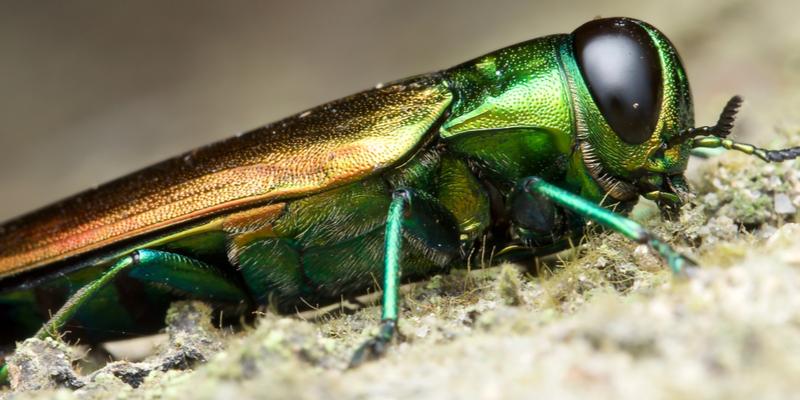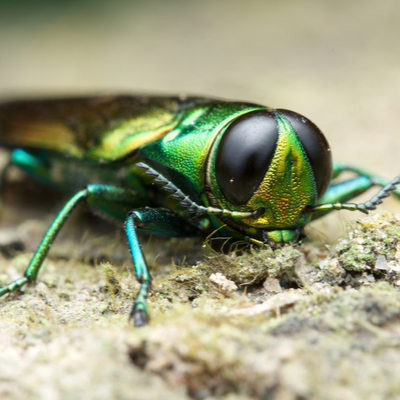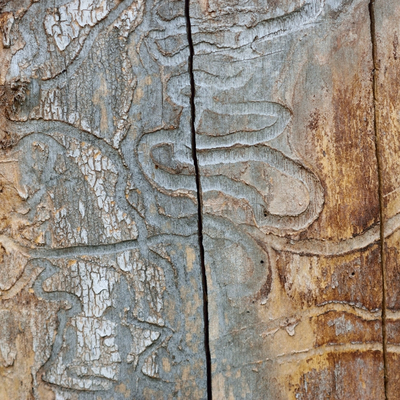Emerald Ash Borer Killing Trees

Trees are an essential part of our life. They provide oxygen, shade, and add beauty to our landscapes. A popular tree throughout the country and in Kansas City is the flowering and robust ash tree. It is considered a deciduous tree and provides a multitude of beautiful colors in the fall. Unfortunately, there is a tree pest running rampant throughout the U.S. that is sucking the life out of ash trees. This pest is known as the Emerald Ash Borer (EAB).
What is Emerald Ash Borer?

The Emerald Ash Borer is a small, metallic green beetle that is approximately one-half inch long. The Emerald Ash Borer feeds on the inner bark of ash trees, disrupting the tree's ability to transport water and nutrients. This feeding eventually kills the tree. EAB was first discovered in Michigan in 2002 and has since been confirmed in 35 states, including Missouri and Kansas.
EAB has had a devastating effect on ash trees throughout the country. It is estimated that this pest has killed hundreds of millions of ash trees since its discovery in 2002. In Kansas City, it is estimated that 30% of all trees are ash trees and over 50% of those are infested with EAB.
What Damage Is Caused by Emerald Ash Borer?
The damage caused by EAB has already killed hundreds of trees in North America and is expected to kill millions more. EAB attacks all species of ash trees, including green, white, black, and blue ashes. The insect bores into the bark of the tree and lays its eggs inside.
As the larvae hatch and begin to feed on the tree’s tissue, they block off the tree’s ability to grow new leaves and transport water and nutrients. This feeding activity eventually girdles the tree, causing it to die.
How Do I Know If My Tree Has Emerald Ash Borer?
There are several signs you can tell if your ash tree has been infested with Emerald Ash Borer. Look for these symptoms:
- Canopy Thinning and Crown Dieback – The first symptom an infected tree will show is the thinning and dying of twigs toward the tree’s upper canopy.
 This is because the young larvae feed beneath the bark, causing damage to the tissues responsible for carrying water and nutrients through the tree.
This is because the young larvae feed beneath the bark, causing damage to the tissues responsible for carrying water and nutrients through the tree. - S-Shaped Galleries & Splitting Bark – Trees attacked by EAB have distinct S-shaped or tunnels beneath the bark. They are approximately 1/8 inch wide and packed with a mixture of sawdust and insect excrement.
- Water Sprouts & Epicormic Shoots – In an attempt to survive, a tree infested with EAB will produce water sprouts (vertical shoots) and epicormic shoots (shoots from dormant or latent buds beneath the bark). These growths are weakly attached to the tree and easily broken.
How Can I Protect My Trees from Emerald Ash Borer?
There are several things you can do to help protect your ash trees from EAB:
- Keep a close eye on your trees and look for any of the signs of EAB listed above.
- Only buy and burn local firewood. EAB travels on firewood and can infest your property.
- Report any affected trees on your property that are not included in one of the quarantined counties to the Kansas Department of Agriculture.
- Remove the tree completely – This is usually only recommended as a last resort when the tree is severely damaged or poses a safety hazard.
Contact The Professionals
Contact Quality All-Care Lawn Services. Our tree and shrub care program utilizes a six-cycle treatment plan that will help increase the strength of your plants and trees. Towards the end of summer, we administer a general fungicide for the prevention and treatment of disease and an insecticide to eliminate any leftover damaging insects. All of these measures will help to ensure a healthy emerald ash tree.
Call us today at 913-894-9250 to learn more about our comprehensive tree and shrub care program.
